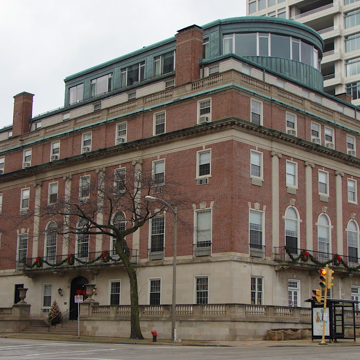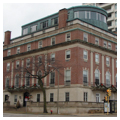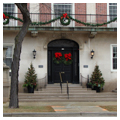One of the city’s most scholarly Georgian Revival adaptations, the University Club is Wisconsin’s only work by John Russell Pope, designer of the Jefferson Memorial in Washington, D.C. The building’s symmetry, red brick walls, and chaste styling recall London’s private men’s clubs. The elegant building, trimmed with carved and dressed Bedford limestone, was altered in 1954 by the addition of an incongruous cocktail lounge of verdigris copper on the rooftop with a dramatic curved bar where members enjoy a view of Lake Michigan. One of the city’s prestigious private social organizations, the University Club originated in 1898 as a gathering place for college-educated men interested in intellectual pursuits. This was the club’s second home and repeats the original’s Georgian Revival style to reflect the English enlightenment period and suggest its members’ unostentatious good taste.
You are here
University Club
If SAH Archipedia has been useful to you, please consider supporting it.
SAH Archipedia tells the story of the United States through its buildings, landscapes, and cities. This freely available resource empowers the public with authoritative knowledge that deepens their understanding and appreciation of the built environment. But the Society of Architectural Historians, which created SAH Archipedia with University of Virginia Press, needs your support to maintain the high-caliber research, writing, photography, cartography, editing, design, and programming that make SAH Archipedia a trusted online resource available to all who value the history of place, heritage tourism, and learning.









